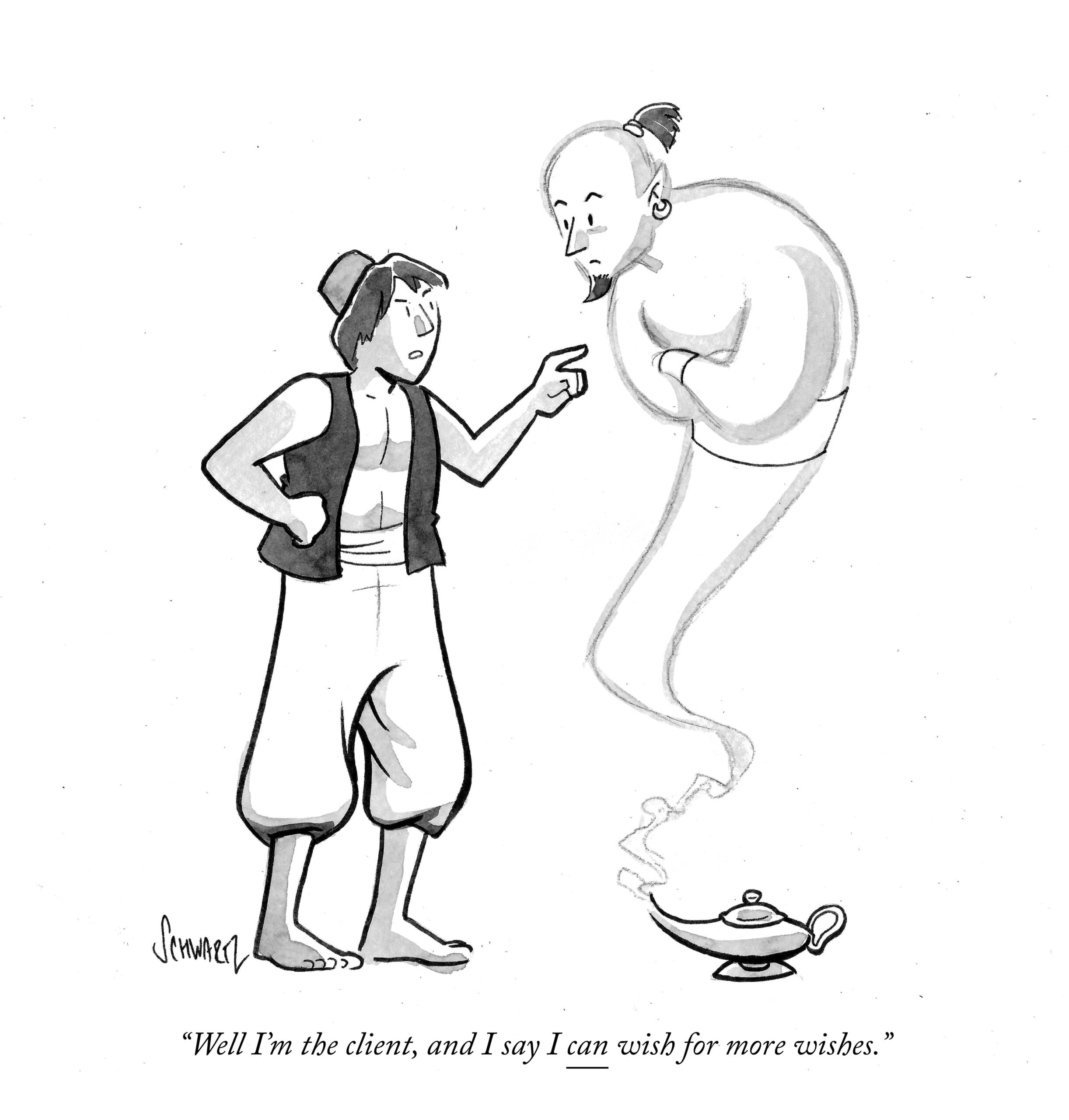Workplace trends
Low-income workers might not even notice minimum wages hikes
The beginning of new calendar years are often a time that minimum wages get adjusted for the cost of living, but pandemic-induced labor shortages have pushed the paychecks of many cooks, housekeepers, and grocery clerks up at a faster rate than required by states. So, while 22 states are increasing their pay floors by up to $2 this year, most low-wage workers are already making well above those minimum salaries. In fact, the lowest 10% of workers by income in each state earned hourly wages that were nearly 50% higher, on average, than their state’s minimum wages in 2023, according to a Wall Street Journal analysis, marking the largest gap between actual pay and minimum pay in a decade. However, as wages continue to rise, some experts warn that higher rates of job loss could subsequently follow.
Hey digital nomads, South Korea is ready to welcome you
In an effort to bolster global competitiveness, as of January 1st, South Korea has officially initiated the issuance of digital nomad visas, opening its doors to remote workers seeking extended stays of up to two years. While previously, foreigners were required to apply for tourist visas without which they could only stay for up to 90 days, the new system will allow employees and employers in overseas firms to live and work remotely in South Korea for a much longer period of time. Digital nomads interested in applying must be able to prove that they earn an annual income of over 84.96 million won (US $65,000,) which is double the gross national income per capita in South Korea. Additionally, applicants must be at least 18 years old and have a minimum of one year’s worth of work experience in their respective field. For now, this new visa system is considered a test run – the government will assess whether to make it a permanent process.
The AI corner
Retailers are enlisting AI in the fight against product returns
Online returns can be extremely costly for retailers, which is why most are trying to limit the practice. While many have enacted tougher return policies or are only offering store credit for returns, apparel and fast-fashion brands are increasingly turning to AI to help with the fight. How exactly? The companies are using the advanced technology to sharpen product descriptions and recommendations, direct advertising toward consumers they believe will hold on to their purchases, and steer certain ads away from shoppers most likely to return products. While they can’t stop platforms from letting customers purchase, they apparently can use AI to boost the targeting for audiences that seem less likely to return.
The US is worried that China’s stealing AI secrets
Over the past few years, the US and China have been competing for supremacy in AI. And while China’s AI capabilities are already believed to be formidable, lately US intelligence authorities have been issuing new warnings beyond the threat of intellectual-property theft – instead of simply stealing trade secrets, they believe China could be using AI to collect and stockpile data on Americans at a scale that has never been possible before. US authorities also believe Chinese intelligence operatives are correlating vast amounts of sensitive information across the databases they’ve taken over the years from OPM, health insurers, and banks – like fingerprints, foreign contacts, financial debts, and personal medical records – to locate and track undercover US spies and pinpoint officials with security clearances.
What to do when an employee quits
By monday.com
Not to be the bearer of bad news but research shows that January is the most common month for employees to quit – and it’s not always the people you’d expect. No matter how great of a manager you are, there will come a time when a top performer, someone with whom you have a really great working relationship, or even a team member you thought had serious potential to grow within your team, chooses to leave for a new opportunity.
And regardless of how disappointing that news can be, as a leader, you need to be prepared to effectively handle employee departures in order to sustain positive relationships and avoid turnover contagion – the phenomenon in which one person leaving triggers others to follow suit.
So, how should you respond when an unexpected employee gives notice?
Try not to take it personally
Despite what some might say, your team is not your family. Of course, it’s important to feel close and connected, but at the end of the day, those reporting to you will undoubtedly shift over time. The first team you manage in your career almost certainly won’t be the same as the last, given that as time goes on, you’ll likely hire some amazing new talent, and also find yourself saying goodbye to people you really appreciated working with. Sometimes you’ll even be the one leaving for something new! So first and foremost, remind yourself that even when a star employee chooses to leave, it’s not personal – they’re being loyal to themselves, not disloyal to you.
Take a moment
As a manager, you’ve likely invested a lot into your team, so finding out that your employee is leaving can be really upsetting. And while you’re certainly allowed to feel whatever you’re feeling inside, it’s extremely important to not react impulsively or say something you may wind up regretting. So, when you first receive this kind of news, do your best to stay calm. Don’t simply try to fill the silence if you’re not sure what to say yet. Take a moment, and then keep your initial reply honest and supportive. It can be something like, “Wow, I’m really sad to see you go, but it sounds like a great opportunity – your new company is lucky to have you.”
It’s also completely acceptable to request some time to process the news before continuing the conversation. In fact, if this update caught you by surprise, it’s actually worthwhile to propose reconnecting later in the day so that you can digest a bit and prepare a few intentional questions that could provide useful information.
Ask for their insights
While saying goodbye to an excellent employee is never easy, try to view these changes as an opportunity to improve and learn how to retain valued team members going forward. When an employee gives notice, ask them if they would be open to discussing how you can best support the team members who are still around. If they agree, here are some questions to ask in order to gain the most helpful insights:
- What excites you about your new role that was missing in your current position? The answer to this question can help you identify where there may have been dissatisfaction. And though it’s likely too late for this particular employee, knowing this information can help you make relevant changes to address these issues for current and future employees at the company. The departing team member may mention factors like compensation, growth opportunities, work-life balance, flexibility, inclusivity, etc. – all of which can reveal a lot when you correlate it with that person’s experience at your organization. For example, if this employee received promotions at the company and was still dissatisfied with their growth and salary, it may be a sign to look into promotion processes and frequency within your team.
- How could I have better supported you as your manager? While this can be an intimidating question to answer as a current employee, given that this person is leaving anyway, they’ll likely be more open to giving you honest feedback. So, take advantage of this opportunity to learn how you can potentially improve as a leader. It can be tough to hear about things you could have done better looking back, but in this conversation, it’s important to not try to justify those decisions or argue about the details. Make space for them to openly share and know that you can just take the critiques you find most relevant and useful. Then, use the feedback to improve the way you manage your employees going forward.
- Are there any team members you think I should check in on after we announce your resignation? After an employee leaves, it’s important to check in on all of your remaining team members, but there may be specific individuals in need of extra attention. Whether they were close to the employee leaving or they’re in the same role and thus may consider similar opportunities elsewhere, use this conversation with the departing employee as a chance to get relevant intel in order to ensure you can provide additional support to those who may need it.
End on good terms
Remember that it’s completely natural for employees to come and go and that this team member has their own reasons for choosing to leave – be it a better opportunity, greater compensation, personal reasons, or all of the above. So regardless of how disappointing it may be that they’re leaving, respect that they are doing what they feel is best for them, their career, and/or their family. As a former employee, this person is still a brand ambassador for your organization and could be a future customer, client, or referral source, so it’s important to end on good terms and to make it clear that ultimately, you want what’s best for them. Thank them for their contributions to the team, congratulate them on this next step, and emphasize that you’d be happy to remain a resource for them going forward.
Come prepared
Turnover contagion is very real, and something of which, as a manager, you need to be wary of. Recent research into tens of millions employee records by data and analytics giant Visier found that when an employee leaves, others in their team are 9.1% more likely to leave as well – and that percentage is even greater on smaller teams. So, when you announce an employee’s departure, be thoughtful and intentional. Schedule a meeting with the whole team to share the news and remember that the more positive and level-headed you seem, the more reassured your team members will be. Make it clear that the person is leaving on positive terms with the company, and do your best to address all of the potential questions your team members may have. From what will happen with this role to the ways in which it will affect the remaining team members to how you’ll all move forward together, come prepared. And of course, let them know that you’re available if they have any questions or concerns as you adjust to the change.
Additionally, in the days following this announcement, try to start implementing the relevant feedback you received from the former employee, and follow up with the team members that they specifically flagged for you.
Water cooler chatter
Despite government pushes, many young Chinese women are not interested in having more babies, which has triggered a crisis for the Communist Party trying to mitigate China’s declining population. The country’s current population is around 1.4 billion, but some experts project it’s likely to drop to just around half a billion by 2100.
Starbucks will allow customers to use personal cups for nearly all orders in an effort to reduce the massive amount of waste the coffee chain produces from its iconic disposable cups. Starbucks notes that the cups must be clean and that baristas won’t rinse them out.
Question of the week
Last week’s answer: Hawaii
This week’s question: What percent of hiring managers lie during job interviews?
Just for laughs

Granting client wishes
Don’t miss more quality content!

